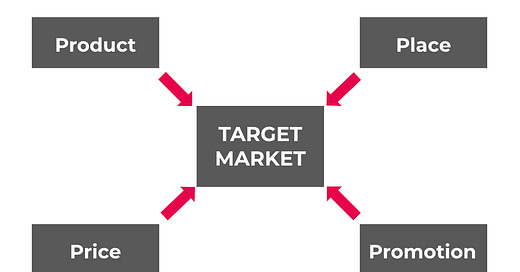The C.A.S.M. Approach for Handbag Designers
Understanding Your Brand: Customer * Agony * Solution * Monetization
As handbag designers, developing a deep understanding of our consumers and their needs is essential. One effective method for doing this is the C.A.S.M. framework—an insightful tool for analyzing our target market, identifying pain points, devising solutions, and exploring monetization strategies. This is probably one of my favorite topics as a professor and as someone who works with handbag brands launching into the market.
I always say, before you even buy a leather skin, map out the C.A.S.M. for your brand so every move you make strategically allows you to become a successful handbag brand in such an oversaturated market. Note, this is part of the Handbag Designer 101 Masterclass which helps take your brand from inception to shelf, and something I discuss frequently on the Handbag Designer 101 Podcast - which is now one year old!
C = Consumer
First and foremost, we must identify our consumers. This involves defining our target market—consider demographics, psychographics, and buying behaviors. Are we catering to young professionals seeking functional yet stylish bags, eco-conscious consumers interested in sustainable materials, or luxury shoppers looking for exclusive designs? Understanding the nuances of our consumer segments will guide our design and marketing strategies.
A = Agony
Next, we turn to A for agony. Here, we explore the specific problems our consumers face. What are their pain points? Perhaps they struggle to find handbags that are fashionable, functional, and affordable, or they may be frustrated with the lack of options for finding a bag that fits their age and lifestyle. By pinpointing these agony points, we can focus on creating solutions that genuinely address our consumers' needs.
S = Solution
This brings us to S for the solution. With the identified pain points in mind, we can now outline how to solve them. For instance, if consumers are looking for versatility, we might design a handbag that can be transformed from a tote to a crossbody with adjustable straps. If sustainability is a concern, we can use upcycled materials or eco-friendly production methods. The key is to develop innovative products that resonate with our target market while effectively solving their issues. Note - this week’s episode Handbag Designer 101 Podcast episode with Handbag Awards’ Winner, Jonathan Romero of Romero New York, who talks about how to 3D print a handbag - it’s really interesting and I strongly recommend listening to this one.
M = Monetization
Finally, we must consider M for monetization. Understanding the revenue model is crucial for any business. Will we sell our handbags through a transactional model, where consumers purchase directly? Or should we explore a subscription model, offering seasonal handbag collections to keep our consumers engaged year-round? Other options might include collaborations with brands or introducing a personalized handbag design service. The right monetization strategy will depend on our target market and their purchasing preferences.
Conclusion
In summary, the C.A.S.M. framework is a powerful tool for handbag designers looking to better understand their market. By focusing on the consumer, addressing their agony, providing viable solutions, and establishing effective monetization strategies, we can build brands that thrive and genuinely serve our customers.
Let’s embrace the C.A.S.M. approach and create handbags that look good, fulfill our consumers’ needs, and most importantly help you spend your own money wisely in developing a product that will sell successfully.
Finally - we are workshopping the cover for Savvy Suzanna. Let me know your thoughts, comments, and feedback. xo Handbag Emily








